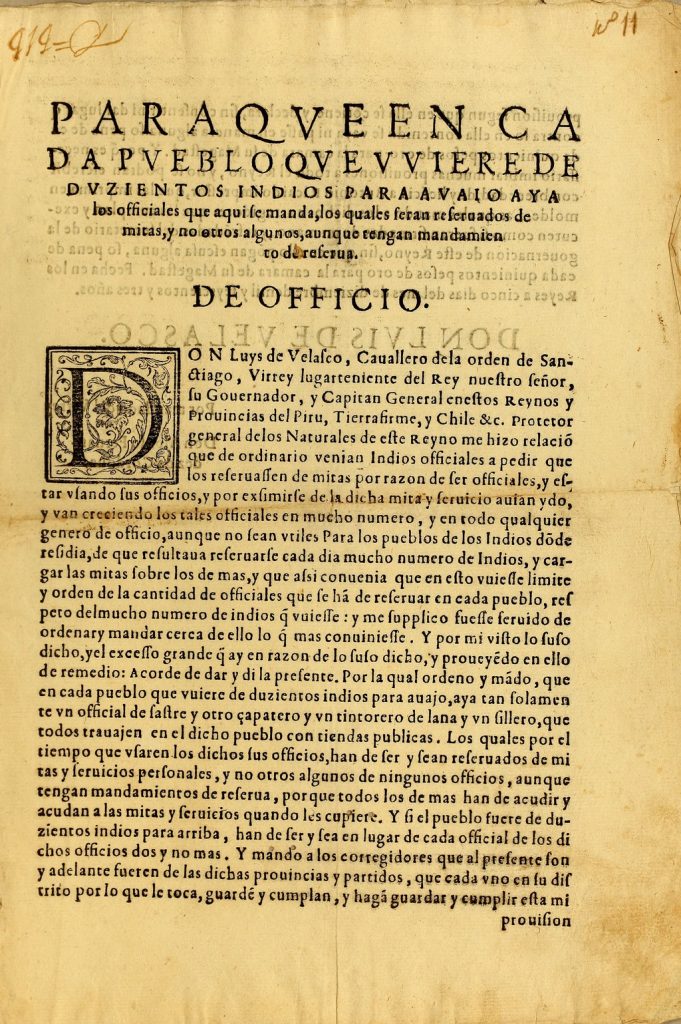
Libraries
Libraries
Para que en cada pueblo que vuiere de duzientos indios para auaio aya los officiales que aqui se manda, los quales seran reseruados de mitas, y no otros algunos, aunque tengan mandamiento de reserua
This document is part of a set of provisions related to the viceregal administration printed in Lima by Antonio Ricardo. In this provision, the viceroy of Peru, Don Luis de Velasco, orders that order and limit be placed on the number of official Indians in each town, due to the increasing number of Indians who fulfilled a specific office and who requested be exempted from the half. He mandates that in each town of up to two hundred Indians, there be a tailor, a shoemaker, a wool dyer, and a saddle-chair. And, in towns with more than two hundred Indians, there are two officers for each office mentioned. All the other Indians, who did not perform one of the indicated trades, had to attend the mitas and other required services.
The mita, a Quechua word that means “shift” was a system of communal work and taxation in Inca times. For Julián Ruiz, already in the viceroyalty, this compulsory labor system was adapted by the Spaniards to channel indigenous labor more profitably, for which reductions or towns of Indians were created, with large displacements of the population far from their place. of origin, where they had to carry out agricultural, commercial and mining tasks, which were not free from abuses. One of the most important was mita in the Potosí mines.
Ivonne Macazana
Proyecto Estudios Indianos

